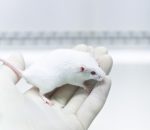First Zebrafish Model of Sanfilippo Offers New Research Opportunities

In a world-first, a team of scientists in Australia has developed a model of Sanfilippo syndrome type A in zebrafish.
“By adding a zebrafish model to the toolbox for Sanfilippo research, we are one step closer to finding therapies for patients,” the Sanfilippo Children’s Foundation stated in a press release, adding, “It is cheaper and easier to breed zebrafish compared to mice models.”
The Australian nonprofit and the U.S.-based Cure Sanfilippo Foundation had supported the research with an incubator grant.
The model was detailed in the study, “An Engineered sgsh Mutant Zebrafish Recapitulates Molecular and Behavioural Pathobiology of Sanfilippo Syndrome A/MPS IIIA,” published in the International Journal of Molecular Science.
Zebrafish have long been used as a model organism in scientific research. These small fish offer many advantages when it comes to conducting experiments — their biology is well-characterized, they are cheap and easy to breed and maintain, and there are many established methods for studying them. However, until now, there had been no zebrafish model for Sanfilippo syndrome.
Now, scientists used gene-editing technology, called CRISPR/Cas-9, to create a strain of zebrafish with mutations in the fish-equivalent of the SGSH gene. Mutations in this gene cause Sanfilippo type A, the most common and most severe type of Sanfilippo syndrome.
Biochemical experiments confirmed that, as expected, these mutant fish had no activity in the enzyme that is encoded by the SGSH gene.
The fish also exhibited a buildup of heparan sulfate — all types of Sanfilippo are characterized by the abnormal accumulation of this molecule. Compared with wild-type zebrafish, heparan sulfate levels were 22.5 times higher in the brains of young adult Sanfilippo fish, and were nearly 50 times higher in aged fish’s brains.
Behavioral tests indicated that young Sanfilippo fish were more hyperactive than their wild-type peers, whereas older Sanfilippo fish were less active. This is broadly consistent with behavioral trends seen in human patients with Sanfilippo, with hyperactivity early in life followed by reduced activity as the disease progresses.
The Sanfilippo fish also showed a reduced fear response, which also is seen in human patients due to impairments in part of the brain called the amygdala.
“Collectively, these data indicate the presence of an early-developmental hyperactivity phenotype followed by an adult hypoactivity phenotype with features of cognitive decline, reflecting behavioural features of disease progression” that are seen in human patients and also mouse models, the researchers wrote.
Additional analyses of the fish’s brains showed biological changes associated with Sanfilippo, including increased apoptosis, or programmed cell death of brain cells early on, as well as lifelong elevated inflammation in the brain.
Taken together, “these data demonstrate that [the Sanfilippo zebrafish] display characteristic pathological [disease-related] features of MPS IIIA [Sanfilippo type A], highlighting its utility as an experimental model for the disease,” the researchers wrote.
The team then tested the effects of treating the fish with a molecule called YVAD, which blocks the activity of a pro-inflammatory signaling molecule called interleukin-1 beta. This treatment reduced the inflammatory activity of microglia, a type of immune cell in the brain, in the Sanfilippo fish.
In wild-type fish larvae, YVAD treatment did not affect touch-related responses — called thigmotactic responses — under non-threatening or threatening conditions — specifically, changes in ambient lighting mimicking the presence of a predator. In the Sanfilippo fish, YVAD treatment also did not affect touch-related responses under threatening conditions.
However, under non-threatening conditions, the treatment “increased the amount of thigmotactic behaviour to levels nearer to, but slightly less than, wild type larvae under non-threatened conditions,” the researchers reported. The team noted that these findings highlight the complexity of behaviors in the fish model.
Notably, although Sanfilippo type A usually leads to early death in people, the Sanfilippo zebrafish showed no differences in survival compared with their wild-type peers, nor did the fish exhibit the “catastrophic” loss of motor function typically seen in people and animal models in later stages of the disease.
The researchers were unsure why this difference might be, noting a need for further study. However, they noted that this may actually be an advantage for the model, as it could allow for more long-term experiments.
“This zebrafish model of Sanfilippo mirrors the disease seen in patients, giving researchers a very helpful new tool to study the condition,” the Sanfilippo Children’s Foundation stated. “This will provide a better understanding of Sanfilippo overall, how it affects the cells of the brain, and will help the identification and testing of new therapies.”







